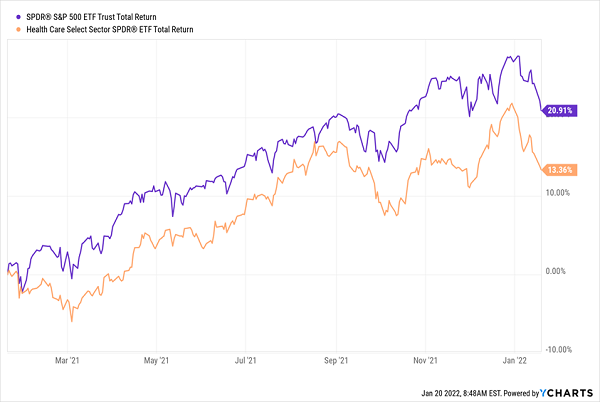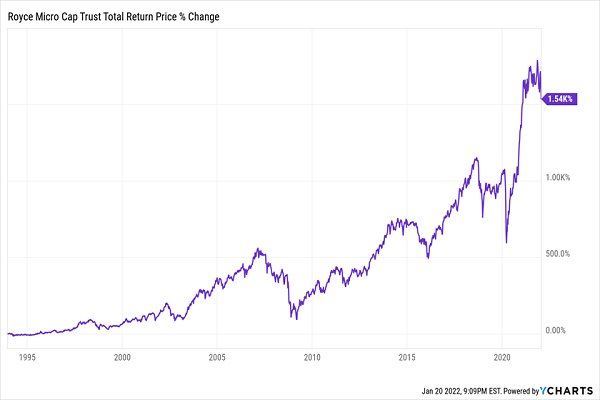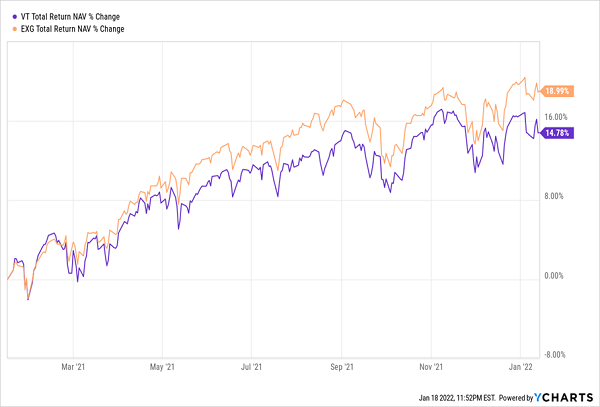This stock market selloff has gone way too far—and it’s pumped up the dividend yields on some of our favorite high-yield closed-end funds (CEFs).
That means it’s time to buy. I’ll name three CEFs the panicked masses have mistakenly tossed over the side in a moment. Together, these three snubbed funds throw off an 8.7% average dividend. Plus they’re trading at a nice “double discount”: that is, the CEFs themselves are cheap and their holdings, which consist of top US and international stocks, are way oversold in this latest market fracas, too.
History Is on Our Side
When considering opportunities like this one, it pays to look at history. And the closest recent parallel we have is the period from December 17, 2015, to December 20, 2019, when the Federal Reserve hiked rates from 0.5% to 2.5%—much higher than it’s expected to go this time around.
How did CEFs do? Just fine. Here’s how three well-known stock CEFs, the Liberty All-Star Equity Fund (USA), Adams Diversified Equity Fund (ADX) and Calamos Strategic Total Return Fund (CSQ) performed during that time:
Equity CEFs Soared in the Last Rate-Hike Cycle

The S&P 500 did well in that span, too, returning 70% (though we much prefer CEFs, not only due to their history of outperformance but for their high dividends: many CEFs yield north of 7% today, compared to a paltry 1.25% for the S&P 500,).
Still, the Chicken Littles are driving the markets right now, which is why stocks are down about 4% in the first few weeks of 2022. That, plus the history we just covered, points to an opportune time to buy.
High-Yield CEF No. 1: A 7.7% Dividend That’s About to Become an Investor Darling
We’ll start with the 7.7%-yielding BlackRock Health Sciences Trust II (BMEZ), which trades at a 5.7% discount to net asset value (NAV, or the value of the stocks in its portfolio) as I write this.
This fund focuses on innovative biotech companies with strong growth prospects. Its holdings include Seagen (SGEN), which is focused on new cancer treatments; Intuitive Surgical (ISRG), a maker of robotic surgical systems; and eye-care specialist Alcon (ALC).
The healthcare sector qualifies for our “double discount” as it’s been left behind by the market in the past year, going by the performance of the benchmark Health Care Select Sector SPDR ETF (XLV), in orange below. That’s despite the fact that these companies’ treatments and equipment will be in greater demand once COVID recedes and the aging population (which hasn’t stopped aging during the pandemic!) needs more care.
Healthcare Fades—and Gives Us Our Opening

BMEZ is also discounted because it’s new, having launched in early 2020. But so far things look good—it’s been closely matching XLV since inception, so buying it gives you the performance of the index fund, plus a lot more of your return in cash, thanks to the CEF’s hefty 7.7% dividend.
And finally, you’re getting more upside potential as BMEZ’s 5.7% discount to NAV narrows (these discounts don’t exist with ETFs, which always trade at par).
High-Yield CEF No. 2: A Small-Cap Star With an Inflation-Busting 10.5% Payout
Second let’s turn to the Royce Micro-Cap Trust (RMT), a 10.5%-yielder with a 10% discount to NAV and a variety of small companies the market has overlooked or simply isn’t aware of, like Mesa Laboratories (MLAB), a provider of diagnostic and environmental gear and services for a range of industries, from pharmaceuticals to food and beverage; Canadian contract driller Major Drilling ; and IT manager PAR Technology Corp. (PAR).
Royce has a long history of finding high-quality stocks the rest of the market either doesn’t understand or has completely overlooked. You can see the results in RMT’s long-term return (and I do mean long: the CEF was launched in 1993).
RMT’s Amazing Track Record

High-Yield CEF No. 3: Global Diversification and a 7.8% Payout, Too
With RMT’s value-priced micro-cap stocks stocks and BMEZ’s health-care stocks, we’re already nicely diversified and well-positioned to profit from a post-pandemic selloff. But let’s add the Eaton Vance Tax-Managed Global Diversified Equity Income Fund (EXG), with its 7.8% dividend yield, to the mix.
While the fund’s 1.3% discount isn’t as big as those of RVT and BMEZ, it has traded at a premium as recently as July of last year and tends to trade for more than its portfolio is worth in bullish times, meaning there’s upside to be had, though the fund’s narrower discount could increase its volatility in the near term.
For the long haul, however, EXG’s track record and portfolio are compelling.
The management team has started by grounding its holdings in the biggest stocks in the S&P 500, including Microsoft (MSFT), Amazon.com (AMZN), Apple (AAPL) and Alphabet (GOOGL). It then complements those with leading foreign firms, like Diageo (DGE), Adidas (ADS) and Nestle (NESN). That smart US/global mix has powered EXG’s underlying portfolio (or its NAV, in other words) past the benchmark Vanguard Total World Stock ETF (VT) over the past year.
EXG vs. the World

Inflation Doesn’t Stand a Chance Against These Bargain-Priced 8.7% Payers
With these three funds, you’re getting an average 8.7% dividend yield and a highly diversified portfolio—all while paying less than the real market price for all of these great companies. It’s a savvy way to take advantage of Wall Street’s latest panic.
Make That 8 Huge Dividends (Yielding up to 8.4%!) to Crush Inflation in 2022
My team and I have uncovered 5 MORE funds that are even better bargains than the three above—and are therefore primed for even bigger upside in the next 12 months.
Taken together, these 5 unsung CEFs are primed for 20%+ price gains in the coming year, thanks to their totally ridiculous discounts. Plus this quintet of income plays throws off an amazing 7.4% yield now, with the highest payer among them handing us a steady 8.4% payout!
These 5 funds are the perfect antidote for the uneven market we’re all expecting this year, and I don’t want you to miss out. Go right here and I’ll give you the full story on these 5 funds now. You’ll get their names, tickers, current yields, a full breakdown of their holdings and much more.
